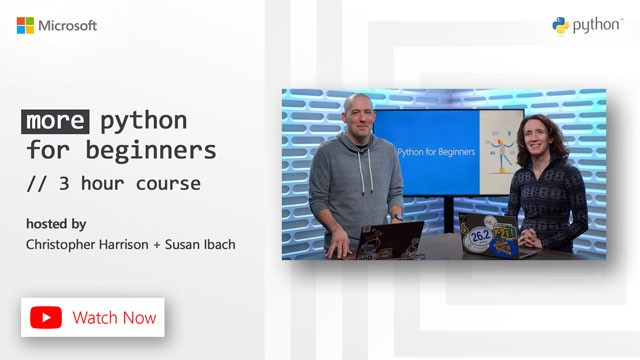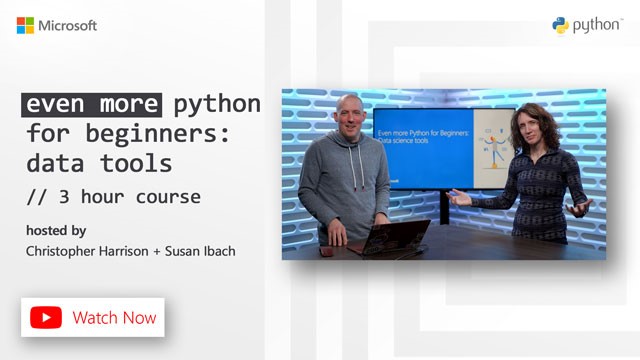When Susan and I created the Python for Beginners series last fall, we had the goal of trying to help new developers make the transition into one of the most popular and flexible programming languages available. We focused on some of the most common features and attempted to bring you to the point where you could complete a quickstart or other Python tutorials on your own.
We were both impressed by how well our audience (you!) liked the videos and we’re really thankful for all the support you’ve shown. Seeing how we could make an impact on so many developers was a fulfilling experience for us too.
But…there’s always more to learn! We had a relatively short amount of time to cover a rather large topic. Cuts had to be made, and certain topics either didn’t get covered or introduced.
So, we’re back for more!
Even better news: we didn’t just create a new series, but two!
The first, cleverly titled “More Python for Beginners” is purely about Python. We’ll examine some of the more intermediate features that didn’t quite fit in our first series. We’ll explore lambdas (anonymous functions) and object-oriented programming. We’ll also introduce some newer functionality to support asynchronous development through async/await.

In the second course, “Even More Python for Beginners: Data Tools,” we’re going to help you build your toolkit for getting into data science and machine learning using Python.
While we’re not going to get into conversations about choosing algorithms or building models, we are going to introduce what you’ll use when you begin the journey. We’ll highlight notebooks, the favorite tool of data scientists. We’ll introduce a couple of common libraries: NumPy and pandas, which are used to help you manage data. You’ll see how to create tables in memory, and how to load, save, and manipulate data. We’ll finish by opening Scikit-learn to create a model and graph the results.

As with the first series, our goal is to help you reach a point where you could attend a course or follow a tutorial. If you’re looking for your next challenge after completing this course, you could predict flight delays, see how to setup classification in machine learning, and explore other free content on Microsoft Learn to continue your growth as a developer. Learning any new skill requires having a base set of knowledge on which to build: we’re here to help you build that base and support your learning journey!
Just like last time, you can reach out to Susan and myself on Twitter at @hockeygeekgirl and @geektrainer.
Happy learning!
